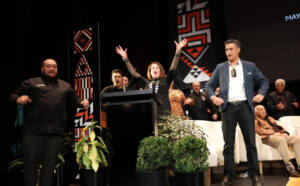
WelCom October 2024
Thousands of people from across the country gathered in Heretaunga Hastings over two days in August for Aotearoa’s first-ever festival – Toitū Te Reo – dedicated to celebrating te mana o te reo Māori, culture and the identity of Māori and wider New Zealand.
Touted as the world’s first Māori language festival, the festival included food stalls, wānanga (symposium), rangatahi poetry slam competition, and street concerts.
Toitū Te Reo took place at Toitoi Hawke’s Bay Arts & Events Centre and on the streets of the Hastings CBD from 8 to 9 August.
Katekita Charles Ropitini said the festival has seen massive success, drawing over 7000 supporters.
Led by Ngāti Kahungunu in partnership with Hastings District Council and Kauwaka Ltd, the event was created to foster and provide a safe space to karawhiua ‘give it a go.’ Māori speakers of all levels took the opportunity to be in an environment celebrating and encouraging people to speak te reo Māori.
The festival is inspired by the Welsh Eisteddfod, which is considered a catalyst for the revival of Welsh culture and language.
Ngāti Kahungunu iwi chairperson Bayden Barber said it was a ‘positive’ two days that celebrated all things Māori. ‘It was an expression of strength, strength in our language, strength in our culture, and an opportunity to expose that to people who may not have been exposed to it in the past.’
Charles Ropitini hopes next year’s festival can feature a section on the development of Māori liturgical language with a Miha Māori. ‘Sacred Heart Church and the Mission Centre are only 100 metres from the main venue on Heretaunga St, so it makes sense to include the Māori liturgical language of the Church as a part of future festivals,’ Mr Ropitini says.